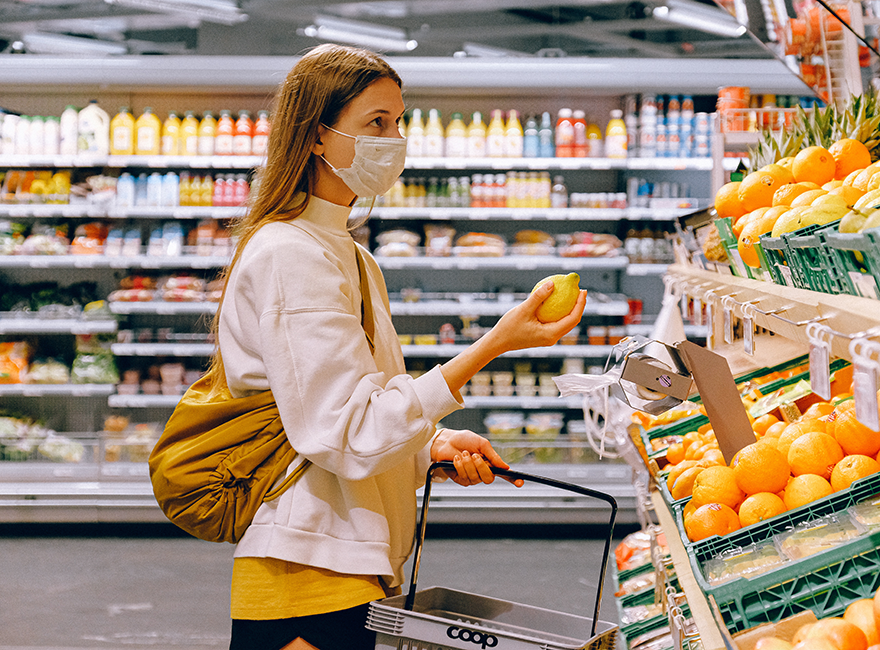
From feast to famine – food insecurity in a global pandemic

By FRANCIS EDWARDS
2020 has been a year of firsts. The first female, woman of colour elected as the US Vice President. The first signs of peace in the middle east following decades of war; of environmental rejuvenation in the Venice canals, and of innovative approaches to education.
But not all of 2020’s firsts have been positive. This year, many families have struggled to put food on the table for the first time, while others have found that very job even harder than they already did.
No longer can ‘food insecurity’ be swept aside as something that only impacts developing countries. Being unable to source, store or prepare nutritious food is also a problem many Australians face. In fact, recent reports by the Australian Institute of Family Studies suggest that between 4% and 13% of the general population, and 22% to 32% of the Indigenous population are food insecure. These estimates however are likely to understate the situation’s true extent – especially now.
Dr Sue Kleve, of Monash University and the Australian Household Food Security Research Collaboration says that food insecurity can come in two forms.
“People can be chronically food insecure, or their experience might be more transitory,” she said.
“This second form is usually the result of a short-term shock like a natural disaster or pandemic, job loss or reduction in work hours, unexpected costs (e.g. health emergencies, car repairs) or even increases to school fees.”
In both cases, the most common cause is financial hardship. It doesn’t require advanced mathematics to work out that when income is low and expenses for essential matters like accommodation, energy and transport add up; spending on more ‘discretionary’ items like food, must slow.
So, it should be no surprise that, in a year where rates of unemployment and financial stress have continued to rise, so too have the numbers of food insecure Australians. Foodbank Australia’s recent Hunger Report highlights that “almost a third (28%) of Australians experiencing food insecurity in 2020 had never experienced it before COVID-19.”
Mission Australia’s Western Sydney Area Manager, Julie Jasprizza-Laus adds that since August they’ve seen increases to the number of people accessing emergency food relief – pantry packs and supermarket [food] vouchers – from their Mt. Druitt facility.
“Our pantry packs are worth about $40 and are for people in emergencies. They have two – three days’ worth of staples (e.g. cereals, milk, snacks and meal ingredients), so they’re only designed to get you through to your next pay,” Jasprizza-Laus says.
“When people come to us for food relief, we use the opportunity to get an understanding of what else is happening for them and how we might help. Sadly, women and children in or escaping family violence situations and people with mental health or addiction issues have been impacted greatly by COVID-19, and we are seeing them access our support at a higher rate than before.”
Focus on finance, not food
However, what may be surprising, is that for many jobseeker/jobkeeper recipients, 2020 has brought some – albeit slight – relief from the chronic worry of where their next meal would come from.
“Although government assistance is providing much needed temporary relief, charities and food insecure Australians alike have a sense of unease about the future as governments plan to withdraw or reduce the additional payments,” explains Ms. Jasprizza-Laus.
“Almost 35% don’t know how they will cope or expect they will not cope well at all when this additional support is no longer available”.
And, as Ms. Jasprizza-Laus predicts, the impending Christmas and school holiday period will see continued increases in the number of people struggling with multiple mouths to feed. And, without stable employment, there’s less money to do it with.
So, what does a solution to food insecurity look like?
It looks like one that doesn’t actually focus on food at all.
It looks like a re-calibration of baseline welfare payments. This would help those who are chronically food insecure to, for once, be able to reliably afford not only fresh produce, but the fuel for the car to transport it, the fridge to store it and the energy to power equipment that cooks it.
Sure, there are also many other solutions, like those focused on localising food production and supply systems as pointed out by Mr Alex Greenwich in a recent Legislative Assembly statement; and those focusing on nutrition education and skills building.
All are valid, but to put it crudely, the best bang for buck will come from focusing on finances, not food.
So far this year, Australians have experienced the feast, the famine, and everything in between. As government assistance is slowly wound back, we may need to rest on hope that the impending festive season is full of feasting, not fasting!









